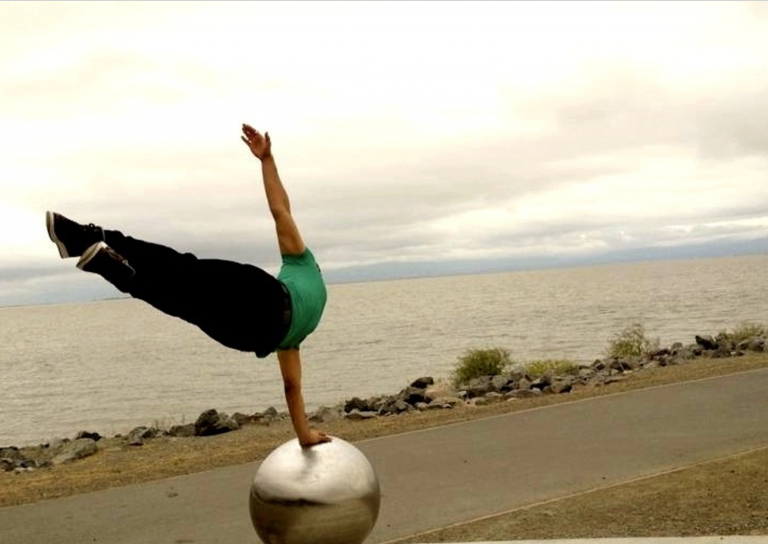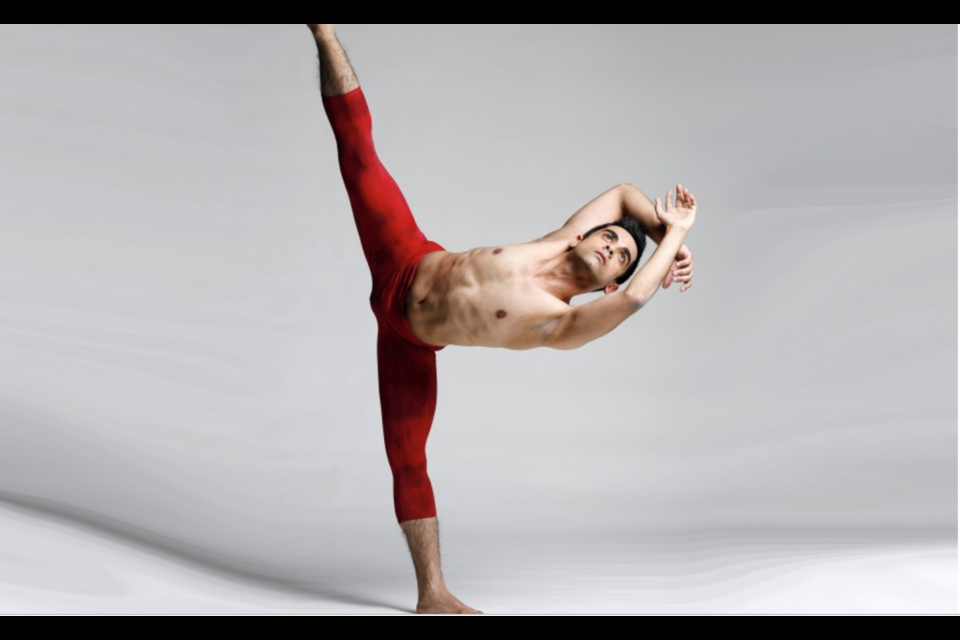
"The Art of Seeing" by Michael Milton
I was husky when I was a boy; or at least, "Husky" was the word written on the label of the jeans my folks bought for me to wear when I was 10. But, by the time I was 14, I sprouted skywards, the result, I imagine, of an eruption of teenage hormones; so it was that nature provided me with a new physique, aided in no especial intention or exertion of my own."
When Park Slope habitue-- dancer Sanchit Babbar—shared with me that he had been overweight until he was twenty years of age, I was shocked. I mean, come on! Look at these photos!
"I was so lazy," he says, his Indian accent faint and delightful. "I was very overweight. I never walked anywhere in New Delhi. I took a car or went by motorbike. I ate what I wanted, when I wanted. And then one day I went to a dance class that friends were taking and the guest teacher from The Danceworx Academy of Performing Arts--Anthony Noa--did a single pirouette. That's what made me decide I wanted to be a dancer. I couldn't get over the perfection of that turn."
And in 2 months, Sanchit (a Hindu name meaning "collected") had shed 50 pounds through dedicated exercise and a thoroughly switched out diet. "My teacher's first instruction when I told him I wanted to become a dancer was 'lose weight.' And so I did. In India, we have great respect for our teachers. We don't question them. We trust in what they say to us. Actually, that has made my journey in ballet easier, really. I do what they tell me. Anthony (Noa) told me, "If you work hard, you can be a dancer," and I have never doubted those words. And I always work hard."

Sanchit-- who teaches ballet at Bridge For Dance and is a member of the American Liberty Ballet --came to New York City from India on a scholarship to The Ailey School, the official school of The Alvin Ailey American Dance Theatre. "They are such a great dance company Everything about Ailey inspires me. I saw Revelations for the first time on my computer in New Delhi. It was the ONLY way to see it!" Sanchit explains, " In India, there aren't really any dancing schools. Touring companies rarely come there. There aren't established ballet companies," he said.
"Sure, there's folk dancing; Bollywood movies are probably the closest you could get to dancing in India. To pursue dance, you need to go elsewhere. Though challenging, I was willing to do whatever it took to dance including convincing my parents that I was making the right move."
"My parents would have preferred that I stayed in India, of course; get a job, get married, have kids. I have had to be so determined in my choice to dance—for myself, of course, but also to show my family I mean business, that there is no room for doubt. When I hear my parents ask about my 'fall back plan' I say, "If you have a fall back plan, that's the plan that will happen. I have no fall back plan because one way or the other, my life will be about ballet."
[perfectpullquote align="right" cite="" link="" color="" class="" size=""]"I'm Hindu we believe that nothing is permanent. So I knew my initial feeling in America of being a fish out of water would pass."[/perfectpullquote]
Sanchit's scholarship at The Ailey School included housing and when he finished his training there, he moved to Park Slope.
"I love it here," he said. "One of my first memories of being in Brooklyn was seeing the Van Leewen trucks in the morning. I don't eat dairy but they have this incredible vegan coconut cream/cashew based ice creams that are creamier than anything I had ever had."
"I grew up in my time at Ailey. Remember, I was older than everyone else in class I was already 22. I was intimidated. I was playing catch up all the time; not just in class. Culturally; other dancers had knowledge they just took for granted. I had to work for it."
Sanchit explains that his teachers didn't teach him how to dance so much as they taught him how to be mentally strong: "It's so important to hold yourself to the task at hand," he said. "You have to ask yourself questions all the time, about your body, about your technique, about the art of ballet, about your commitment, and to-- above all-- ignore the negative voices that always want to get in."
"My mother is very strong. When I first started at Ailey, I wanted to go home to India and she was the one who said, 'No! Stay there and finish what you have started.' I'm grateful for that advice. But there was so much I didn't know how to do; cook a meal, do my own laundry, how to shop in a Western grocery store. My family isn't rich but still, I was very spoiled at home in India. Part of my dance training has been about getting stronger in taking care of myself at all levels."

"I'm Hindu we believe that nothing is permanent," said Sanchit. "So I knew my initial feeling in America of being a fish out of water would pass."
I ask, "But how do you deal now with challenging situations?"
Sanchit smiles. "I turn to my mentor (Noa). We skype. We talk on the phone. He doesn't allow me to entertain negative thoughts. He tells me that whatever I think, then I am right! I only want to be right about succeeding so those are the only thoughts I have."
Sanchit learned from Noa and passes lessons on to his own students. "I tell my students, "It's not pain you are feeling, it's your brain!" What I mean is that when we allow ourselves to disappear into our art, pain disappears, too. The brain focuses on the art, not the hurting calf or foot."
I ask him who is dancing idol is and without missing a beat he says, "Baryshnikov, of course!"
"I get excited when I'm watching him do something breathtaking and I hear some part of myself whisper in my brain, 'You could never do that, Sanchit.' That voice in my brain never stops me. It energizes me! I immediately want to rush back to class and do whatever I saw over and over again until I can do it."
Pain, Sanchit explains, is a great teacher. "Dancing, of course, can be physically painful. But moving to America, leaving my family, having a dream which is hard to explain to my people at home these all cause pain, too. Americans seem to fear pain not just physical, but spiritual and intellectual, too." He adds, "I've learned that the right choice is rarely the painless one."
"My goal is to dance at the Royal Ballet."
And by the way, he has no fall back plan!



.png;w=120;h=80;mode=crop)
